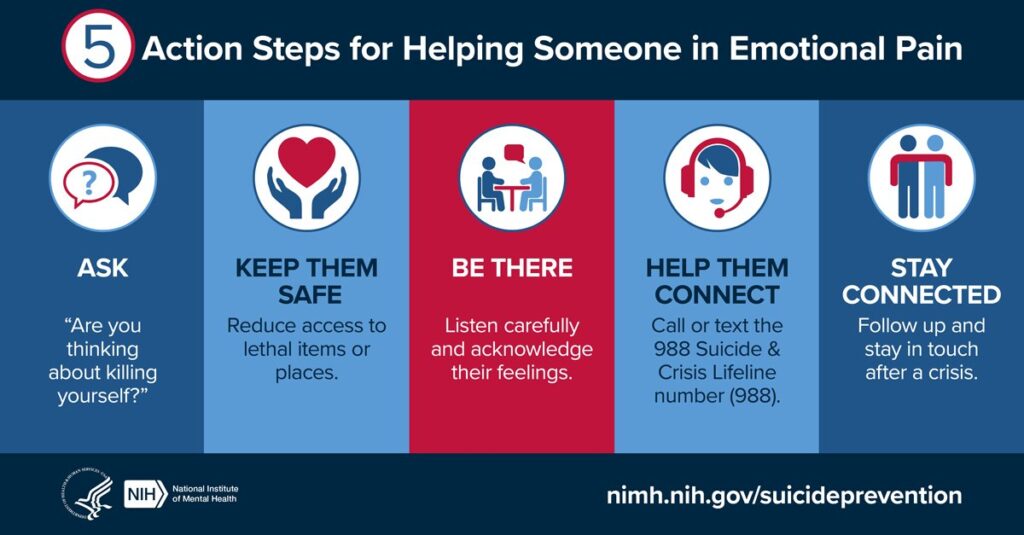People of all genders, ages, and ethnicities can be at risk. Suicidal behavior is complex, and there is no single cause. The main risk factors for suicide are:
- Depression, other mental disorders, or substance use disorder
- Chronic pain
- Personal history of suicide attempts
- Family history of a mental disorder or substance use
- Family history of suicide
- Exposure to family violence, including physical or sexual abuse
- Presence of guns or other firearms in the home
- Having recently been released from prison or jail
For people with suicidal thoughts, exposure, either directly or indirectly, to others’ suicidal behavior, such as that of family members, peers, or celebrities can also be a risk factor.
Most people who have risk factors will not attempt suicide, and it is difficult to tell who will act on suicidal thoughts. Although risk factors for suicide are important to keep in mind, someone who is actively showing warning signs of suicide may be at higher risk for danger and in need immediate attention.
Stressful life events (such as the loss of a loved one, legal troubles, or financial difficulties) and interpersonal stressors (such as shame, harassment, bullying, discrimination, or relationship troubles) may contribute to suicide risk, especially when they occur along with suicide risk factors.
Family and friends are often the first to recognize the warning signs of suicide, and they can take the first step toward helping a loved one find mental health treatment. See NIMH’s page with resources for finding help for mental illnesses if you’re not sure where to start.
Identifying people at risk for suicide



